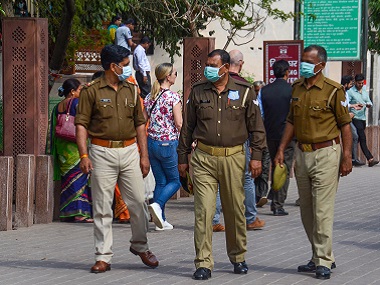The Central Pollution Control Board (CPCB) has said that the 21-day lockdown imposed since 24 March to combat the spread of coronavirus has resulted in significant improvement in air quality across the country. [caption id=“attachment_8122781” align=“alignleft” width=“380”] Police personnel wear masks as a prevention measure against coronavirus. PTI[/caption] According to the report, the major sectors contributing to air pollution are transport, industries, power plants, construction activities, biomass and refuse burning, road dust and residential activities. The CPCB added that stringent restrictions on travel, and stopping non-essential activities have led to an improvement in air quality. As per the report, the day of ‘
Janata Curfew’ itself saw a significant reduction in particulate matter (PM10) and Nitrogen Oxide (NOX). While on 21 March, AQI was moderate in Delhi, the period between 22 and 23 March 22 saw a 44 percent reduction in PM10 levels. There has been an improvement in air quality in 85 cities due to the Janata Curfew and lockdown. Around 23 cities registered ‘good’ air quality, while 65 others recorded satisfactory air quality, the report added. Bulandshahr in Uttar Pradesh and Guwahati were the only two cities out of the 103 surveyed that recorded poor air quality during this period. The AQI is measured on a range of 0 to 500. If the AQI is between 0-50, it is considered to be good, while one of 51-100 is considered to be satisfactory. A place is said to have a poor air quality if its AQI range is 201-300. Poor air quality leads to breathing discomfort to most people on prolonged exposure.
There has been an improvement in air quality in 85 cities due to the Janata Curfew and lockdown due to coronavirus since 24 March, the Central Pollution Control Board (CPCB) said in a report
Advertisement
End of Article


)

)
)
)
)
)
)
)
)



